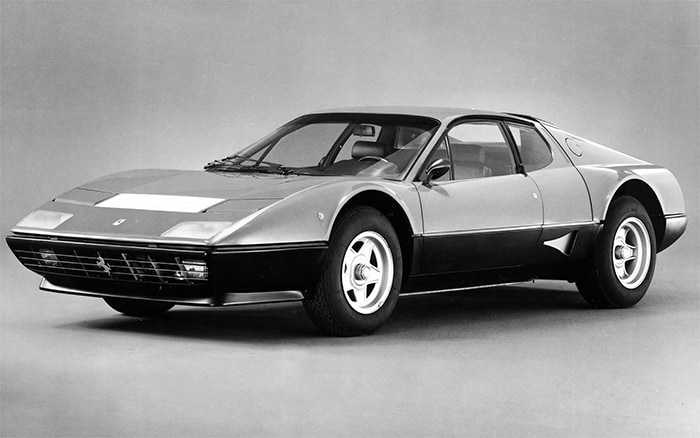In the late 1970s, Ferrari made one of its most dramatic shifts in design and engineering. With the debut of the Ferrari 512 BB (Berlinetta Boxer) in 1976, the company moved its flagship V12 model from a traditional front-engine layout to a mid-engine configuration. This bold decision transformed Ferrari’s identity and brought its road cars even closer to its Formula 1 and endurance racing machines.

A Radical New Design
The 512 BB replaced the Daytona, trading the long-hood proportions of classic grand tourers for a sleeker, wedge-shaped profile designed by Pininfarina. Its low, aggressive stance, retractable headlights, and signature side intakes reflected the design language of the 1970s supercar era.
The name “Berlinetta Boxer” referenced the car’s flat-12 engine — although technically a 180-degree V12, Ferrari referred to it as a “boxer” due to its horizontally opposed cylinder arrangement.
Power and Performance
Under its rear deck sat a 5.0-liter flat-12 engine, producing around 360 horsepower. Paired with a 5-speed gated manual, the 512 BB could reach a top speed of about 174 mph, putting it firmly among the world’s fastest cars of its time.
The mid-engine layout significantly improved balance and handling compared to the Daytona, giving the 512 BB a more race-inspired character.
Evolution of the Berlinetta Boxer
The 512 BB evolved over time, with the later 512 BBi (introduced in 1981) bringing electronic fuel injection for improved drivability and reliability. This version made the Boxer easier to live with while still delivering the visceral performance Ferrari owners expected.
Racing Influence
Though Ferrari did not officially campaign the 512 BB in factory racing efforts, private teams adapted versions of the car for endurance racing, including appearances at Le Mans. The Boxer’s design and engineering proved capable both on the road and track, further blurring the line between Ferrari’s competition cars and its road-going models.
Lasting Legacy
The 512 BB marked a turning point in Ferrari history. It was the first time Ferrari’s flagship car embraced the mid-engine philosophy, a layout that would influence successors like the Testarossa and 512 TR. Its combination of bold design, advanced engineering, and flat-12 performance made it a true 1970s supercar icon.